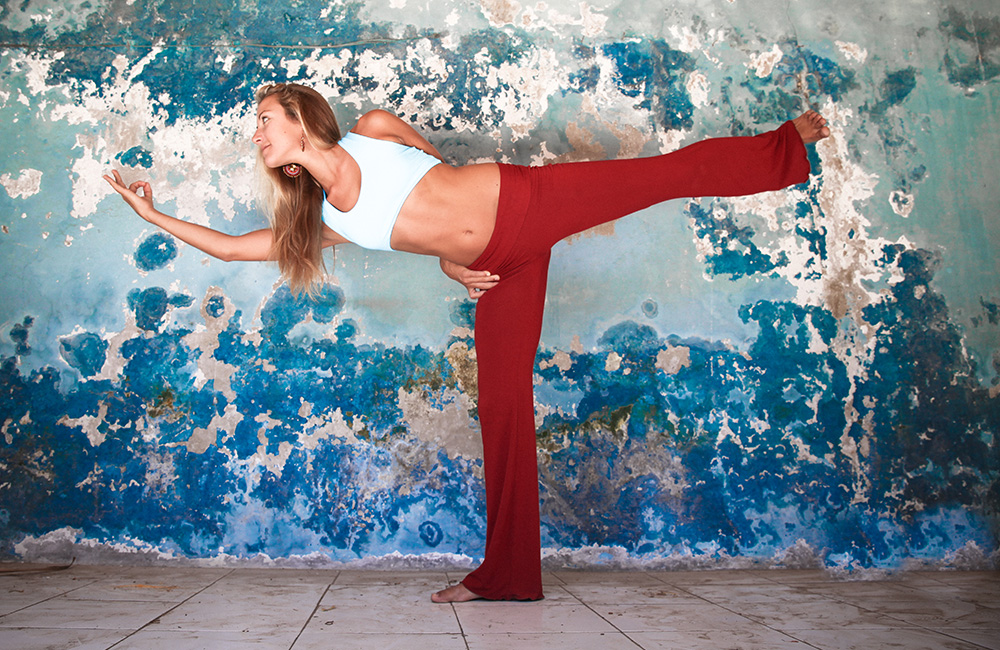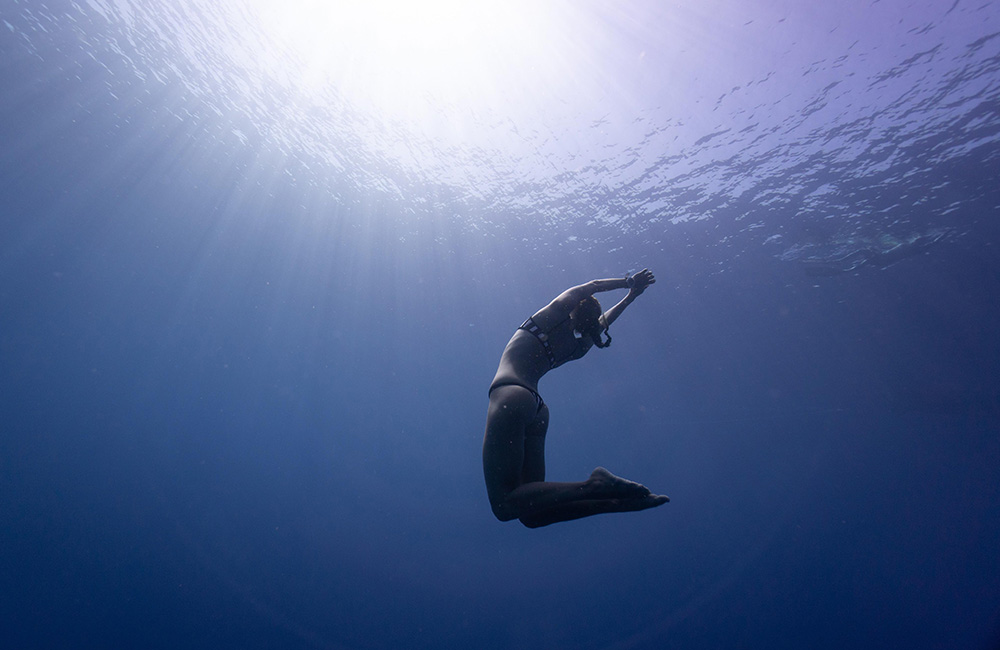
Kate Middleton teaches freediving and offers yoga teacher training courses. © Heather Bonker
Living on Gili Trawangan, a small island close to Bali, Kate Middleton spends her days freediving, doing yoga, writing poetry and training yoga teachers.
It’s a dreamy life in paradise. But training for freediving demands focus and discipline. Middleton regularly competes in elite freediving competitions, such as Vertical Blue, and takes home wins and new records. Her yoga practice helps her stay relaxed, supple and strong.
“Perhaps the biggest draw to freediving is the peace that comes from total immersion in nature,” Middleton says. “You might call it oneness, presence, connection, or, the ‘state of yoga’. At the heart of both yoga and freediving lies this gift of simultaneously being in contact with the inner and outer world.”

© Mike Board
It’s not just about fancy poses
Yoga involves much more than the physical postures, called asanas, most commonly associated with it. Aside from asana, there’s also pranayama and dhyana, breathing exercises, and meditation. Each play a key role, Middleton says.
The asana, or physical practice, results in greater physical strength, flexibility, mobility and body awareness. Pranayama, which is traditionally believed to enhance the life force or prana, increases body awareness, lung flexibility and C02 tolerance. Meditation fosters greater self-awareness, compassion, curiosity, focus, and self-kindness.
“The greatest way yoga supports my freediving journey is how it prioritises relationship to self,” Middleton says. “When self-love is there, anything is possible. Without it, nothing is enjoyable.
“If I let my inner critic run my dive session then no depth will feel like enough. When I dive from the heart, for the pleasure of being in my body and in the water, depth is irrelevant and it’s a spiritual experience.”
Press play to do a simple yoga class with Kate Middleton
Here are three reasons why yoga is a perfect compliment to freediving:
Your personal laboratory
“You can think of freediving as field research and your yoga mat as the laboratory,” Middleton says. “It’s here, back on land, where you can empty all of your findings and start to sort through them, or let them sort themselves out, one breath at a time.”
Better breath holds
“If you prefer a simple and clear outlook on the yoga for freediving movement, consider the fact we cannot be at peace and stressed out at the same time. Yoga reduces stress, which lowers metabolic rate and oxygen consumption. More yoga, therefore, results in a longer breath hold. You will also have more comfortable breath holds and longer dives. Oh yeah, and it’s also hard to have fun while feeling tense, so more yoga equals more fun!”
Know your body better
“Yoga also teaches greater body awareness. We can break that down into interoception and exteroception; the awareness of your inner body and your body in space. This helps you tune in to how you’re feeling on a dive so that you can relax into the process and also know when you need to safely surface.
“As far as physiological adaptation, yoga asana is an immensely effective way to increase your lung flexibility as well as your mobility and strength.”
How to get started
Middleton recommends finding an authentic teacher who you connect with and feel inspired by. Sometimes that might take a while. Until then, here are four tips to get started:
Learn online
If you’re totally new to yoga, try doing yoga with Middleton in the video above. And check out a few free online classes on Youtube or a platform like yogaglo.com. That way you can try a few styles and see what you like.
Start slowly
Many of us have a tendency to push too fast, too soon. With yoga this can sometimes lead to injury. Take your time; start gently, learn to relax and breathe well first before trying more demanding asanas or sequences.
Get one-on-one
Sometimes the fastest way to learn is to have one-on-one classes. That way you have the teacher’s full attention, and can work specifically around your goals and to support your freediving.
Immerse yourself
If you are looking for an immersive experience, go and learn yoga and freediving with Middleton! She hosts yoga and freediving retreats and training camps on Gili and Bali.
Lead images: © Mike Board
More articles about yoga and freediving:
Say namaste to the freediving island yogi